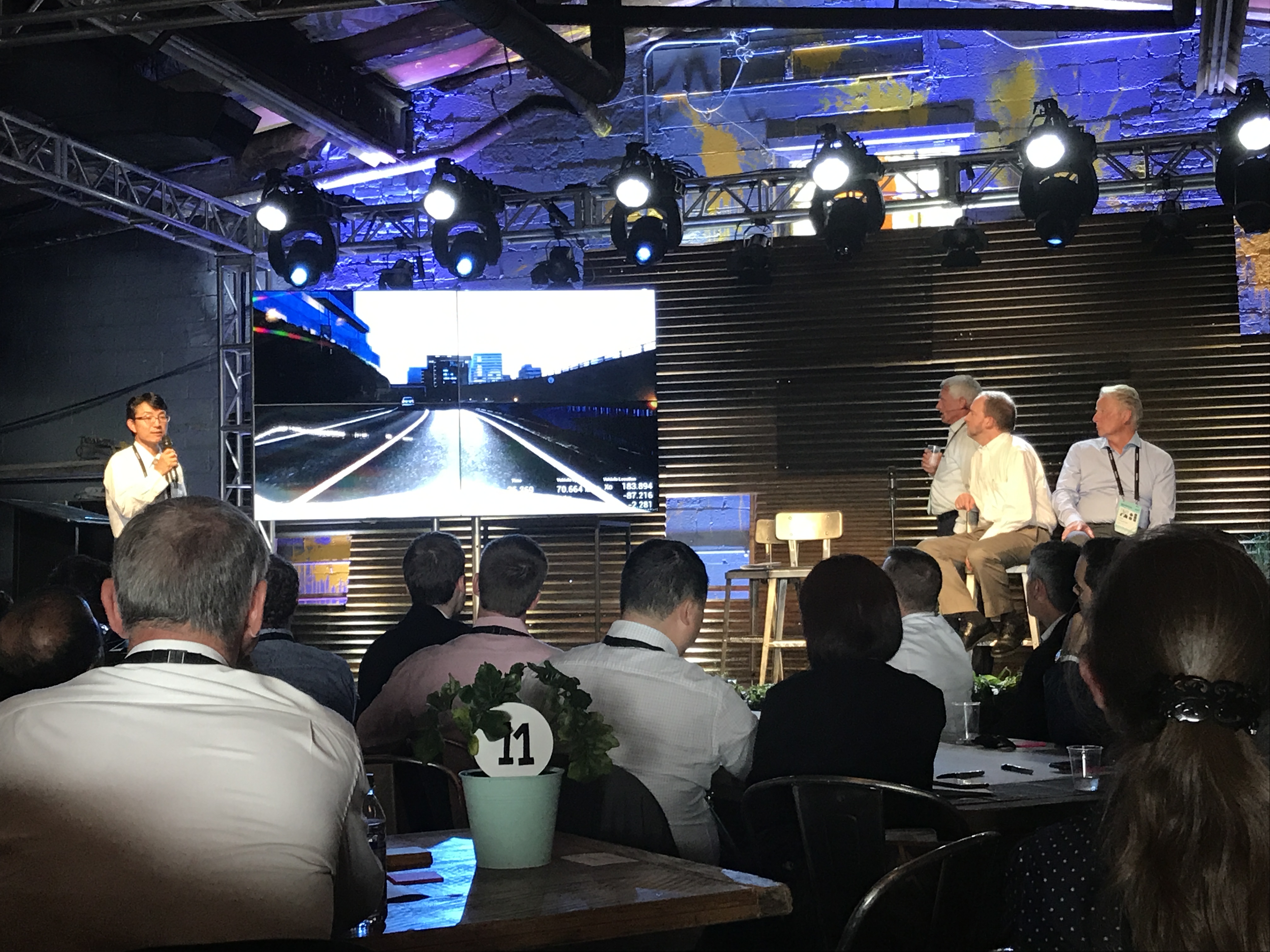June 23, 2017
At first glance it would seem unusual that Michelin, one of the largest tire manufacturers in the world, would organize a conference on sustainable mobility in Montreal. The phrase is hardly synonymous with tires, especially when it comes to personal vehicles.
But in an era of disruptive newcomers and tech-driven innovation, the Movin’On conference was a prime example of how established players in transportation are working to adapt to shifting consumer preferences.
The transportation sector is currently filled to the brim with buzzwords and new entrants, mobility conferences rarely move beyond paying lip service to innovation. Instead, they often include lineups of high-profile speakers repeating the same spiel they’ve given in dozens of other hotel ballrooms and auditoriums. Movin’On sought to break up this stale approach by creating an environment that was more social than pedantic.

(At one point, former NHTSA Administrator David Strickland was put into a literal press box called The Aquarium)
The format of the event itself reflected the disruption that is currently underway in the industry. It was reminiscent of an outdoor festival, rather than an industry conference at a hotel – attendees first entered through a modern art gallery that led to a waterfront park where a giant Michelin tent served as the centerpiece, with clusters of vendors and social spaces surrounding it.
Every morning, participants had the opportunity to sign up for opportunities to share ideas with like-minded individuals through “brain dates” and “master classes.” And throughout the day, participants filed into reimagined auditoriums, including a tent with a 360-degree stage and a “cabaret” with tables and chairs lumped closely together in a small room.

From automakers to transit agencies, the entire sector is trying to adapt to the shifts in consumer preferences and challenges from newcomers.
By having a seat at the table, a Michelin employee said, the company can help to shape the future of mobility and drive sustainability initiatives forward.
There was not a sense of irony in this statement, or even the format of the conference – in fact, it was often easy to forget that a 128-year-old company convened the event.
Movin’On did still retained the same staples of any transportation conference: familiar faces from automakers and tech firms, panels on buzzy topics like carshare and automated vehicles, and – of course – the more radical wings of the sector advocating for Hyperloop, “flying cars,” and other alleged silver bullets.
Industry leaders from BMW, Turo, Mobileye, and Uber all spoke about how the private sector is (or has plans for) collaborating with the public sector to deliver new technologies to consumers around the world, improve safety, and/or reduce greenhouse gas emissions.

Ironically, few government officials were there to hear those ideas. The result was an echo chamber where the private sector told the private sector that it should work with the public sector. But the public sector was not there to hear them or interact with them on panels, save for a handful of keynote speakers.
Michelin also presented a big idea for the future of transportation: the company used Movin’On as a platform for the grand unveiling of its new concept tire, VISION. In a press release, Michelin stated that the tire was designed to “drive a convergence between all technologies with the goal of inventing an object that represented the mobility of the future as well as being both sustainable and intelligent.”

VISION is what would happen if a person went to a transportation conference, wrote down each buzzword they heard, and then decided to use all of them to imagine the tire of the future. Michigan states that it is airless, connected, 3D-printed, customizable, and rechargeable. It is also made from bio-sourced, biodegradable materials – including unexpected items like orange peels, hay, bamboo, and wood.
Is it a pie-in-the-sky idea? Sure.
Will it actually happen in our lifetime? Maybe – maybe not.
But this idea, like all big ideas, provides an opportunity to reimagine a fundamental component of every vehicle. Consumers certainly would find a lot of value in tires that can be repaired rather than replaced, cannot be punctured, and will inform them if it is beginning to wear down.
Even if only one of the aspects of the VISION tire is integrated into tires in the near future, it will be still be progress for vehicles. Regardless of the media hype around Hyperloop and Uber Elevate’s air taxis, transportation networks will still rely on tires to separate a vehicle chassis from the road – no matter whether it is being used for carshare or rideshare, in automated vehicles or connected vehicles, on a bus or in a personal car.
This was the ultimate value of Movin’On: it gathered innovators, skeptics, and established companies for what might best be described as a festival of ideas. Movin’On took a step toward moving beyond the hype around new technologies in order to find how they could be integrated today in order to make a lasting difference.








